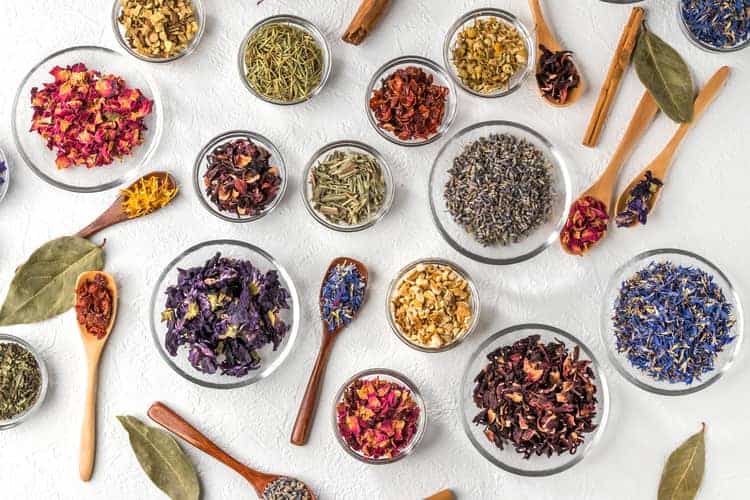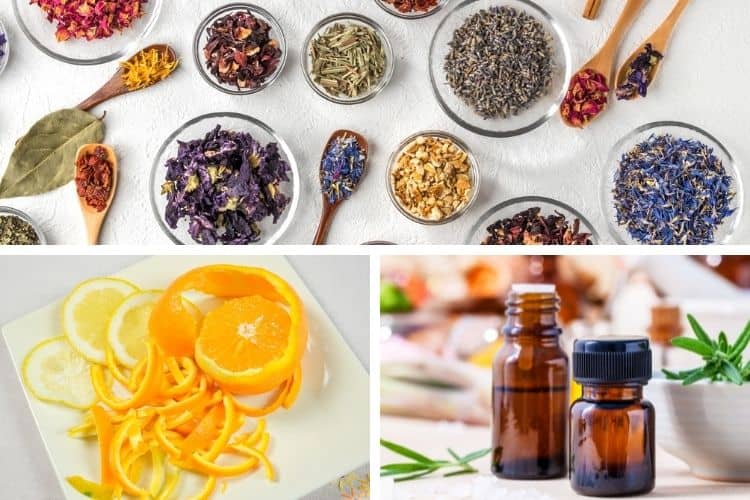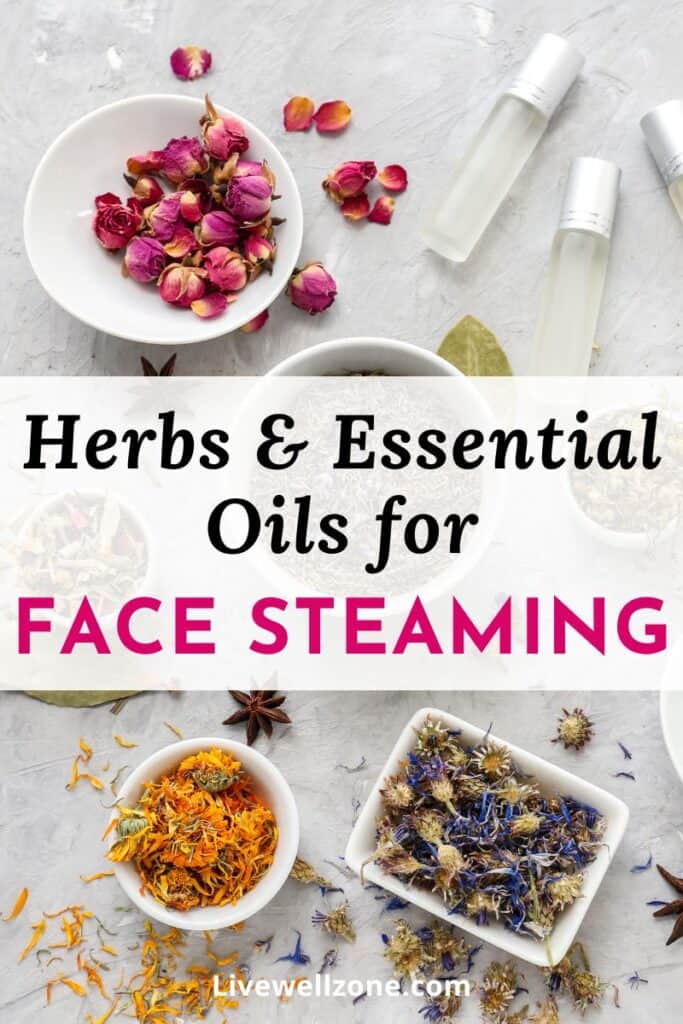
So, you want to take your facial steam sessions to the next level and you’re wondering “what can I add to my facial steam?”
In general, you can put herbs, essential oils and fruit peels in facial steaming water. However, it’s important to note that these ingredients can only be used in DIY steamers. They can’t be used in store-bought steamers because they could end up damaging the machine.
That said, if you have any doubts about what your facial steaming machine can or cannot handle, be sure to read the manual or email the manufacturer.
Now, without further delay, let’s take a closer look at what you can add to your water for facial steaming.
NOTE: there’s no research that dives into the benefits of steaming with any of the add-ins mentioned throughout this article. However, the practice of steaming – especially with herbs – remains popular because of anecdotal reports of its benefits.
This post contains some affiliate links and I earn a commission (at no additional cost to you) if you use them to make a purchase.
WHAT TO PUT IN WATER WHEN STEAMING YOUR FACE

1. Herbs
Herbs have traditionally been used for a variety of skin conditions, including acne, dry skin, eczema and more. While there is no research showing that they are beneficial when used in steaming, they are a popular addition to at-home steaming.
Some popular herbs to choose from include:
- comfrey.
- chamomile.
- hibiscus.
- lavender.
- peppermint.
For a detailed look at each of these herbs be sure to read this guide on how to use herbs for face steaming.
2. Essential Oils
If you want to fully incorporate aromatherapy into your face steaming, then essential oils are a must-have.
Most of the oils listed below are suitable for all skin types. However, I’ve noted the cases in which they can be particularly beneficial for specific skin types.
| Essential oil | Ideal skin types |
|---|---|
| Roman chamomile | all skin types, especially dry skin. |
| Cypress | suitable for oily skin. |
| Eucalyptus | all skin types. |
| Frankincense | all skin types, especially dry skin. |
| Geranium | all skin types, especially dry, sensitive and mature skin. |
| Lavender | all skin types, especially dry, sensitive skin. |
| Lemon | suitable for oily and acne prone skin. |
| Peppermint | suitable for oily and acne prone skin. |
| Rose | all skin types. |
| Sage | all skin types. |
| Sweet orange | all skin types. |
| Tea Tree | oily and acne prone skin. |
3. Fruit Peels
In general, citrus peels add a clean and invigorating aroma to a facial steaming session.
Even though orange and lemon peels are the most commonly used, you can also experiment with:
- lime.
- grapefruit.
- clementines.
- tangerines.
Just as with herbs, fresh peels are better, but you can substitute with dried peels.
Another advantage of using these peels is that they’re great for all skin types. This allows you to mix and match them based on what you have on hand or based on your mood.
4. Green Tea
Another item that some people use for face steaming is green tea.
The main reason for using green tea is that it is high in antioxidants and can be quite gentle and soothing to the skin.
But once again, it’s not clear if any of those benefits are carried into the steam. You may be better off using green tea topically I discuss in this guide on green tea vs matcha for skin.
5. Salt
Unrefined salts – such as sea salt or pink salt – are another ingredient that some people use in face steaming.
While these salts do have health benefits in terms of their trace mineral content, there’s no evidence to suggest that those benefits translate into the steam.
HOW TO USE HERBS, ESSENTIAL OILS AND OTHER INGREDIENTS FOR FACE STEAMING

In general, the following ratios work well when making an herbal face steam blend:
- 1 cup of fresh herbs (or 1/2 cup dried)
- 4 cups of very hot water
- 1 – 2 drops essential oils
Some blends to try are:
- Rosemary, peppermint, lavender and eucalyptus oil.
- Calendula, lavender, comfrey and geranium oil.
- Peppermint, rosemary and tea tree oil.
No matter which herbs you decide to use, it’s more practical to buy them in bulk (rather than trying to get them from your local grocery store). I suggest using Mountain Rose Herbs for this.
Once you have your ingredients, here’s how to proceed.
STEP 1: Remove all oil, dirt and makeup from your face and neck.
STEP 2: Combine ½ cup of dried herb and 4 cups of hot water into heat-safe bowl. Optionally, you can include a handful of fruit peels also.
STEP 3: Sit down with your face about 8 – 12 inches away from the bowl.
STEP 4: Create a tent around you by draping a towel over your head and the bowl.
STEP 5: Close your eyes and steam your face for 5 – 10 minutes.
STEP 6: Continue with your skin care routine as usual (use this guide to learn what to after steaming your face).
FAQs ABOUT WHAT TO PUT IN FACIAL STEAM WATER
Can I steam my face with honey?
To get the most of honey, it’s best to apply a thin layer to your face after steaming. Since honey is a humectant and anti-inflammatory, it will help to draw moisture back into your skin, while also soothing any redness that may have resulted from steaming.
CONCLUSION
Steaming your face with natural ingredients like herbs and essential oils is a fun way to give yourself an at-home spa day!
I hope this article gave you some ideas to play with during your next steaming session.

You Might Also Enjoy:
Homemade Face Mask After Steaming: 8 Recipes Your Skin Will Love!
Which Is Better: Face Scrub Or Face Mask? Pros, Cons, How and When To Use
How To Add Rosehip Oil To Your Skin Care Routine: Quick Tips To Follow
Essential Oil Dilution for Face: A Step-by-Step Guide for Beginners
Vitamin C Serum Vs Aloe Vera Gel: Which Is Better for Clear Skin?
Can I Apply Honey On My Face Every Day? Benefits, Recipes and Tips To Pamper Your Skin

